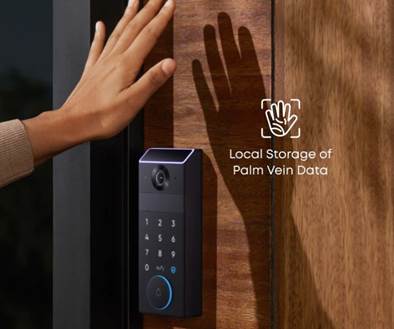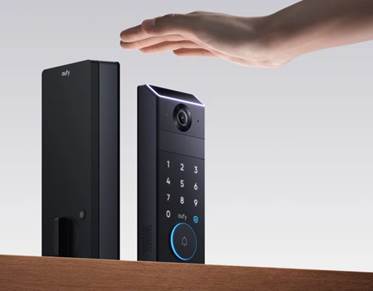Smart locks are easy and safe,
but they require frequent maintenance. These locks, like any other
technological device, are susceptible to failure if not maintained. A little
routine maintenance ensures that your lock works properly. You don't want to be
locked out or have a dead battery in an emergency. This tutorial will help you
securely clean your smart lock, maintain its parts, and avoid common mistakes. With
proper upkeep, smart locks can stay secure, responsive, and
dependable for years. Let’s dive into practical tips for keeping yours in top
shape.

Why Is Smart Lock
Maintenance Important?
Preventing
Unexpected Failures
Neglecting smart lock maintenance may result in abrupt
failures. Dirty sensors, worn batteries, or loose parts may prohibit the lock
from functioning when required. Regular check-ups discover minor issues before
they become emergencies. Dust or outdated firmware may impede locking or
unlocking. To avoid such concerns, clean and inspect your lock on a weekly
basis. Smart locks are sophisticated, and carelessness might result in serious
consequences. Maintenance takes a few minutes but saves hours of frustration.
It, like brushing your teeth, helps to prevent bigger problems in the future.
Enhancing Device
Lifespan
Smart locks last longer with proper maintenance. Keep
mechanical parts clean and moving smoothly to reduce motor and circuit strain.
Dirt, moisture, and rust hasten the interior parts. Regular battery inspections
and software updates reduce system stress. Cleaning the exterior and
weatherproofing delicate areas reduces premature ageing. Smart locks are
expensive; therefore, you should protect your investment. The correct lubricant
or early battery replacement can provide years of reliable performance without
the need for replacements.
Boosting Security
and Reliability
Well-maintained smart locks are safer. Sensor dust and
grime may impair biometric and keypad operations. Dead batteries may make the
lock useless or vulnerable to forced entry. Keeping the firmware updated
provides your device with fresh updates and security features. To ensure secure
access, change temporary codes on a regular basis and analyze app logs.
Unmaintained locks operate poorly and are more prone to failure. Smart locks
should protect, not annoy. Maintenance ensures that your system responds quickly
and safely when you need it.

How Do You Clean
and Care for a Smart Lock?
Safe Cleaning
Methods for Touchpads and Keyholes
Gently wipe the touchpad and metal surface with a
microfiber cloth. Avoid using abrasive sponges or paper towels that scratch or
lint. If needed, softly dampen the cloth with water or a screen-safe cleaning
solution. Never spray substances upon the lock. Rather than insert harmful
objects into keyholes, use compressed air to remove the trash. Cleaners
containing alcohol, bleach, or ammonia can harm electronics and coatings.
Cleaning your smart lock on a regular basis keeps it responsive and the finish
fresh and professional without causing damage to the interior.
Battery
Compartment Cleaning and Contact Care
Carefully open the battery compartment according to
the instructions in your lock's manual. Remove the batteries, then use a dry
towel or cotton swab to wipe off the compartment and contacts. To gently remove
corrosion, use a swab moistened in white vinegar and dry. Never use water or
abrasives to clean contact lenses. Finger oils can inhibit conductivity, so
avoid overhandling terminals. Never misalign fresh, high-quality batteries.
Cleaning the lock on a regular basis maintains its internal systems operating
properly, preventing false alerts and energy consumption.
Lubrication: What
to Use and Avoid
For mechanical parts such as the latch or keyhole, use
graphite-based lubricants rather than oil-based sprays like WD-40, which
collect dust and accumulation. To avoid residue, apply sparingly using a
nozzle. Before utilizing motor-driven bolt smart locks, read the manufacturer's
instructions. Silicone spray may be safe but check. Keep the lubricant away
from touchscreens, circuit boards, and batteries. Lubrication promotes movement
and reduces friction and wear. If done correctly, this little step can extend
your lock's mechanical life and ensure year-round functioning.
What Are Common
Smart Lock Maintenance Mistakes to Avoid?
Ignoring Firmware
and App Updates
Many consumers skip firmware or software upgrades,
believing they are unnecessary. However, these upgrades address bugs, security
flaws, and device compatibility. Antiquated firmware may cause lock or unlock
failures to be delayed. Check your app for monthly updates and activate
automatic upgrades. Delays in smart lock upgrades could jeopardize security or
operation. Outdated programs can potentially disrupt lock and cloud sync. Keep
your lock's software up to date for optimal security, quick control, and long-term
support for new smart home platforms and advancements.
Using Harsh
Chemicals or Wrong Tools
Harsh cleansers may cause harm to the finishes and
sensors of smart locks. Avoid glass cleaners, alcohol sprays, and industrial
wipes. These chemicals can harm electrical components, rubber seals, and metal
surfaces. Only use mild cleansers and microfiber cloths that have been
recommended by the manufacturer. Sharp tools can damage keyholes and battery
compartments. Avoid using too much pressure when cleaning touchpads and
screens. Using the improper goods decreases the lock's responsiveness, shortens
its life, and may invalidate your warranty. Smart locks demand gentle care.
Handle them as if they were fragile electronics rather than hefty equipment.
Leaving Dead
Batteries Inside for Too Long
Not changing dead batteries could result in
significant consequences. Drained batteries leak over time, particularly inside
locks. Contact corrosion and circuit damage from leaking may render the lock
inoperable. Check your battery on a regular basis, especially in cold or humid
environments where power drains more quickly. After receiving a low-battery
notice, replace the batteries immediately. To ensure equal discharge, use new
batteries from the same brand. Keep spares handy to avoid delays. Your smart lock
may stop working due to battery degeneration. Proper battery care protects the
hardware and assures emergency functionality.
Conclusion
Smart locks require maintenance, not just
installation. Regular maintenance keeps them safe, responsive, and reliable.
From delicate touchpad cleaning to firmware updates, even small efforts can go
a long way. Avoiding bad battery care and chemical degradation protects your
investment and provides peace of mind. Consider your lock as both a security
tool and a piece of smart technology. The eufy FamiLock S3 Max combines design,
security, and maintenance. Properly maintained smart locks like this can provide
you peace of mind about your home's security.
